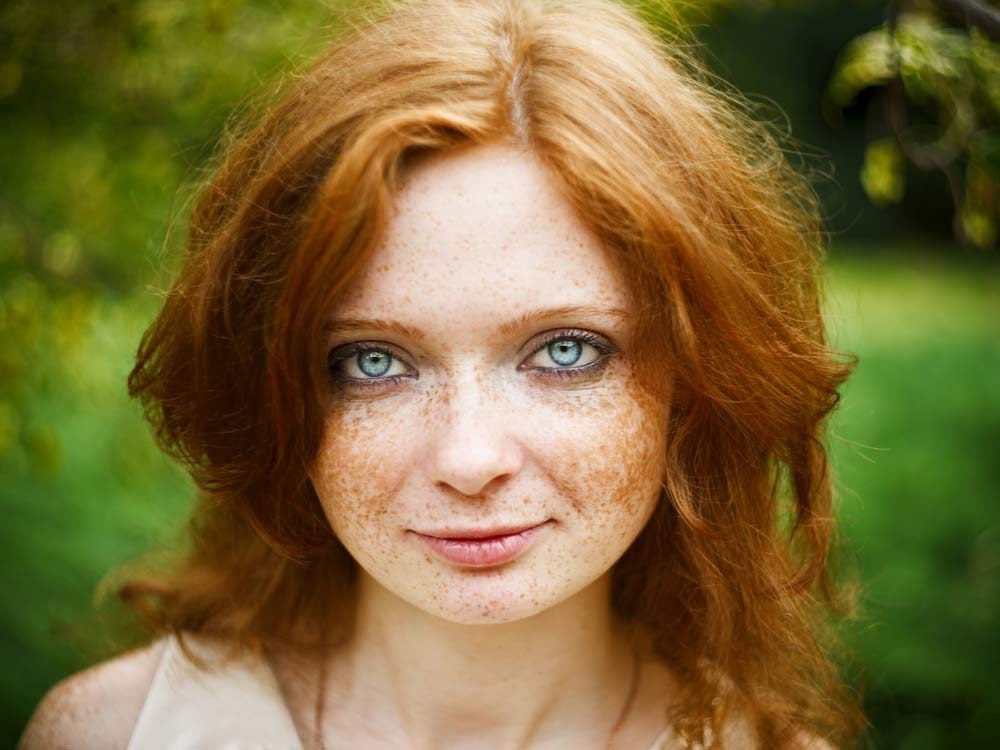Have you ever wondered about the rarest natural hair color? While we all admire the stunning shades of red, brown, and blonde that grace the world, there’s a color so elusive that it’s often mistaken for a myth. This isn’t about trendy dyes or fleeting fads, but a true genetic rarity: red hair.
/Screen-Shot-2020-08-31-at-2.57.48-PM-ab7152b68d9042838d10c0ff58f8d3bf.jpg)
Image: www.byrdie.com
The allure of red hair lies in its striking contrast against the dominant brown and black hair colors found across the globe. Its unique history, tied to ancient mythology and cultural significance, adds another layer of intrigue to this rare phenomenon. Beyond aesthetics, exploring the genetics behind red hair sheds light on human evolution and the fascinating interplay of genes and environment that shapes our physical traits.
The Genetics of Red Hair: A Tale of Two Genes
The color of our hair is determined by the presence and activity of pigment-producing cells called melanocytes. These cells contain melanin, a complex pigment that gives hair, skin, and eyes their color. Different types of melanin contribute to the diverse range of hair hues we see: eumelanin produces dark brown and black colors, while pheomelanin produces lighter shades like red and blonde.
Red hair is a result of a specific genetic mutation in the MC1R gene, which controls the production of pheomelanin. This mutation, known as a recessive trait, means that both parents must carry the red hair gene for their child to inherit it. It essentially “switches off” the production of eumelanin and activates the production of pheomelanin, leading to the distinctive red hue.
The MC1R gene can have multiple variations, or alleles. Individuals with two copies of the recessive red hair allele, known as R alleles, will have red hair. However, individuals with one R allele and one other allele, like the dominant brown hair allele, will likely have blonde or light brown hair. This explains why red hair often appears in families with light brown or blonde hair, as the red hair gene can be present but not expressed as the dominant trait.
The Geographic Distribution of Red Hair: A Global Perspective
While red hair is considered rare globally, its distribution is far from uniform. The highest concentration of redheads is found in Ireland, Scotland, and the northern parts of England. This geographical distribution is linked to the historical migration patterns of early Europeans, particularly the Celts, who carried the red hair gene from their ancestral homeland in the Middle East and Europe.
The prevalence of red hair gradually decreases as you move eastward across Europe, becoming less common in Southern Europe and even rarer in Asia and Africa. This pattern suggests that the red hair gene was introduced to various populations through admixture and subsequent migrations, highlighting the role of migration in shaping genetic diversity.
Beyond Genetics: Environmental Factors and the Red Hair Phenomenon
While genes play a primary role in determining hair color, environmental factors can also influence its expression. Vitamin D deficiency, often seen in regions with less sunlight, can sometimes trigger a temporary shift in hair color, making it appear slightly lighter or even redder. This is known as a “golden blonde” effect and is attributed to the body’s response to limited sunlight exposure.
Furthermore, exposure to strong sunlight can also affect hair color. Repeated exposure to UV rays can lighten hair, making it appear more blonde or reddish. This is why many people with dark hair may notice a slight reddening of their hair during the summer months.

Image: mavink.com
Mythology and Cultural Significance: The Redhead in History
Red hair has long been associated with folklore, myths, and legends. Across different cultures, redheads have been portrayed as both alluring and dangerous, often symbolizing passion, strength, and even supernatural powers. In Irish mythology, red hair is often linked to mythical beings like fairies and elves, while Norse mythology associates it with fire and the god of thunder, Thor.
In ancient Rome, red hair was celebrated as a symbol of beauty and aristocracy, while in Victorian England, it was seen as a sign of rebelliousness and eccentricity. These diverse cultural perspectives highlight that the perception and interpretation of red hair have evolved over time and across different societies.
The Future of Red Hair: A Rare Trait Enduring
Despite its rarity, red hair remains a vibrant and enduring trait, a testament to the diversity and resilience of human genetics. While some studies suggest that the prevalence of red hair may be declining due to interbreeding and genetic dilution, the red hair gene continues to exist and be passed down through generations. The future of red hair is uncertain, but its unique history, cultural significance, and enduring allure ensures that it will continue to fascinate and inspire future generations.
What Is The Rarest Natural Hair Color
Conclusion
From its genetic origins to its cultural impact, the rarity of red hair adds another layer of complexity to the tapestry of human diversity. While its prevalence may be declining, there’s no denying the enduring appeal and cultural significance of this distinctive trait. Understanding the genetics and distribution of red hair allows us to appreciate the intricate interplay of genes, environment, and history that shapes our physical features. As we continue to unravel the mysteries of human genetics, the secrets of red hair remind us of the beauty and wonder hidden within our own DNA.



/GettyImages-173599369-58ad68f83df78c345b829dfc.jpg?w=740&resize=740,414&ssl=1)


